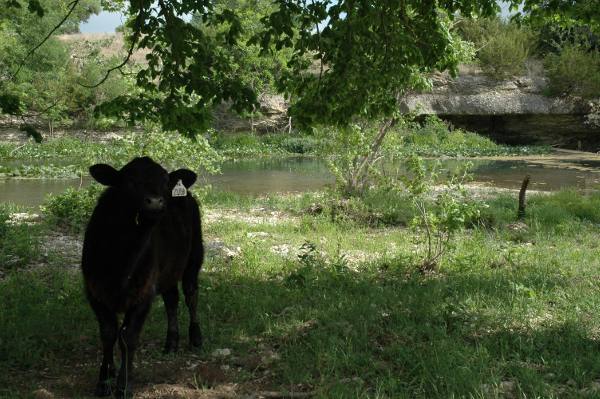August 17, 2012

Texas ranchers considering restocking options should think profitability first and foremost before writing a check, according to a Texas AgriLife Extension Service economist.
Stan Bevers, AgriLife Extension economist at Vernon, told producers at the Texas A&M Beef Cattle Short Course in College Station that the outlook for beef cattle prices is positive given current supply and demand.
“The U.S. calf crop is at 34 million compared to 46 million during the 1981 period,” Bevers said. “The next couple of years the calf crop, including dairy calves, is projected to be at 32 million to 33 million. What’s feedlot capacity in this country? That’s a hard number to come up with, it’s not recorded anyway.”
Making some assumptions, you’ll come up with 38 to 42 million head.
“Feedlots are going to have to chase calves that are fewer and fewer and now deal with higher prices for corn and roughages. Do what you can do to hold onto what you’ve got as best you can because you will be rewarded.”
That, added with a positive outlook for cattle prices over the next couple of years due to supply and demand, should aid the decision-making process.
“If I choose to restock, I want some assurance of that female giving me a calf each of the next two years,” Bevers said. “I think we will have pretty good prices for the next two to three years. I want to be in the game.”
Looking at Food and Agricultural Research Policy Institute projections, beef cattle prices are forecast to continue a steady climb upward near $170 per hundredweight by 2014. Bevers said cattle prices have seen some softness lately in price due to the uncertainty of the current corn crop. However, there will be a larger corn crop in the future and national cattle inventory levels are at their lowest since the 1950s, which signals high prices for the next couple of years.
When ranchers consider restocking, Bevers said it’s important to consider the cost of the initial investment, annual income the investment will generate, and the salvage value at the end of the useful life of the investment.
“Collectively, is she a good investment?” Bevers said, is the question each producer should ask.
Some factors Bevers said to consider when looking at potential replacement cows are:
Annual cow costs. These are $588.22, according to Standardized Performance Analysis.
Weaning percentage and weaning weights. The Texas Standardized Performance Analysis database averages are 82.1 percent and 525 pounds.
Future calf market prices.
Bevers said another factor to consider is the type of female you want to purchase. This could include cow-calf pairs, bred cows, or those requiring a development phase, such as heifers. He said longevity of ownership also needs to be a consideration.
“The longer you keep a productive female, the cheaper she is to own,” Bevers said.
Bevers said he has several spreadsheets that producers can use to evaluate their options. Visit http://agrisk.tamu.edu for this and other information.
You May Also Like




